You notice tiny specks on your window sill and figure that it’s just in need of cleaning – until the specks suddenly start moving. Then you realize that those specks aren’t dirt or dust but bugs. But what exactly are those tiny bugs on the window sill?
Different types of tiny bugs could be crawling around your window sill. In this article, we’ll look at four possible tiny bugs that live on the window sill:
- Clover mites
- Biscuit beetles
- Booklice
- Springtails
Read on to learn more about the different types of tiny bugs on the window sill, their appearance, behavior, and more.
Tiny Bugs on Window Sill – What Are They?
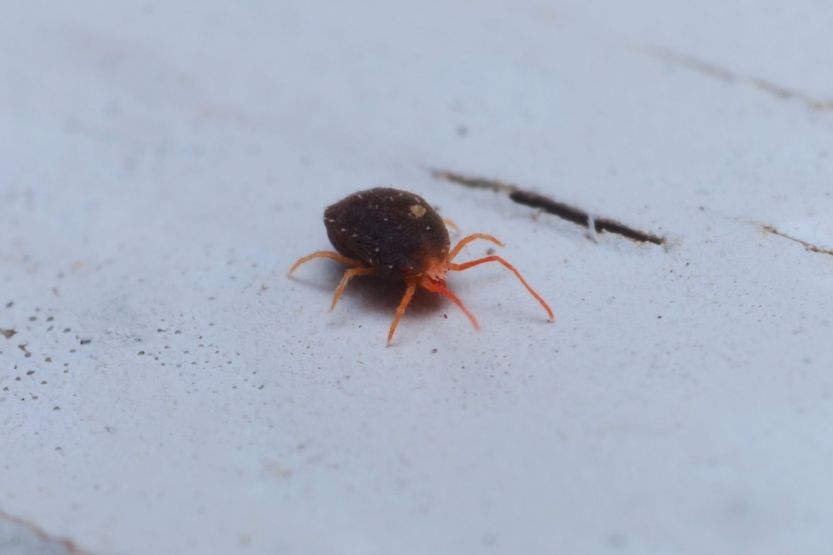
Many tiny bugs could be crawling around your window sill. Four of the most common bugs on the window sill include clover mites, biscuit beetles, booklice, and springtails.
These bugs may live in a different part of the house but get inside through the window. Often, cracks in the window, or if the window is left open, will result in tiny bugs on the windowsill. See below for what these tiny bugs maybe:
1. Clover Mites – Tiny Red Bugs on Window Sill

Let’s talk about clover mites according to the following categories:
- Color
- Activity
- Size
- Ability to Overwinter
- How to Get Rid of Them
Color
You may be able to identify the bugs in your windows according to their color. For instance, the tiny red bugs on window sills are Bryobia praetiosa, also known as clover mites. These mites are arachnids. Also, they are plant feeders that sometimes invade homes.
Activity
Clover mites have been a common household pest since the end of World War II. They are drawn to plant vigor and soil nutrients. Plus, their increased activity is related to lawn fertilizer use.
Infestation may occur depending on the lawn’s proximity to the house. A large number of them may infest a home. But they are unable to reproduce indoors and would shortly die out.
Size
An adult clover mite measures 0.75 mm long. It has either a reddish or greenish color. Its first pair of legs are greatly elongated, and its abdomen has sparsely arranged feather-like plates or scales.
Clover mites can often be seen on sunny window sills, moving about at a relatively quick pace.
Ability to Overwinter
As a parthenogenetic species, clover mites will overwinter in any dry and protected location at any stage in their life cycle. But they most especially overwinter during the egg stage.
Overwintering eggs can be found in vast numbers under tree barks. They are found between building walls and crevices and cracks on concrete sidewalks.
Adult clover mites become active once the temperature has risen above freezing. This is while the eggs hatch in early spring. They usually complete one generation before hibernating in warm weather for the summer. Then they will complete another generation in the fall.
Clover mites become particularly troublesome in the spring. They emerge from overwintering and enter into homes.
How to Get Rid of Them
Although clover mites do not attack people, they can still be a nuisance.
To get rid of these tiny red bugs on the window sill, spray a registered pesticide to the exterior of your home up to the first windows’ bottom. Also, make sure to spray the lawn and shrubbery up to 15 feet away from the house.
Make sure that the insecticide you are using is labeled specifically for the site of application (house exteriors, lawns, etc.). Doing so will prevent you from staining your house or burning the plants.
Removing grass 6 to 24 inches adjacent to the foundation can also prevent mite infestation while using a strong vacuum can suck up mites indoors. There is no need to chemically treat your home for mites, as they will eventually die of dehydration in a few days:
2. Biscuit or Drugstore Beetle – Tiny Brown Bugs on Window Sill
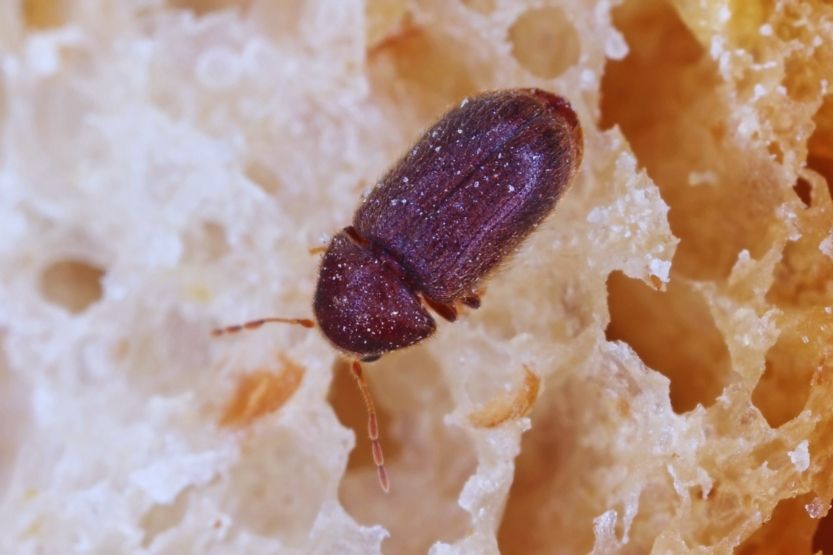
Let’s talk about the biscuit or drugstore beetle according to the following categories:
- Name
- Appearance
- Female Biscuit or Drugstore Beetle
- How to Get Rid of Them
Name
The tiny brown bug on the window sill is the Stegobium paniceum, also known as the biscuit or drugstore beetle. In Pennsylvania, a common insect is named the biscuit beetle because it feeds on the following:
- Flour,
- Grains,
- Pasta, and
- Biscuits.
It is called the drugstore beetle because it also feeds on pharmaceutical drugs. It usually infests the following:
- Seeds,
- Stored foods, and
- Occasionally stored grains
However, although not considered a major grain pest.
Appearance
An adult drugstore or biscuit beetle is very active and is identifiable by its swift skittering movement. It is about 1/10 inch long, light to a red brown-colored hard shell, and a humpback. Also, it has distinctive grooves in its wing covers, an antenna that ends in three enlarged sections, and an oval-shaped body covered in short, fine yellowish hairs.
This kind is frequently mistaken for Lasioderma serricorne or the cigarette beetle. It is a related species that is less elongated in proportion to the width. Also, it does not have striation on its wing covers.
Female Biscuit or Drugstore Beetle
Stegobium eggs are oval-shaped, pearly-white, and so small that they are almost impossible to see with the naked eye.
Females will lay their eggs in a food source or dry organic substance and hatch in six to ten days. They will enter their larvae stage for about four to five months. They will feed on the food source and spread by moving from product to product during this time.
Once the larvae form a cocoon made of silk and food material, it enters the pupa stage for around 12 to 18 days before becoming an adult. The entire life cycle of a Stegobium paniceum can be completed in 40 to 50 days.
How to Get Rid of Them
You can prevent these tiny brown bugs on the window sill from infesting stored grains. Just empty the grain bin of dust and old grain before introducing new grain. Then, clean up traces of old grain from floors, corners, and walls.
Check the grain bin at two-week intervals during warm months. Then, check at one-month intervals during cooler months to look for signs of moldy areas, hotspots, and live insects. Should any of these be present, the grain needs to be aerated to lower the temperature and moisture level.
Apply an approved insecticide on grain that will be stored for more than six months. Do not fumigate unless as a last resort. If it becomes necessary, contact a qualified pesticide applicator with the required technical knowledge to do it properly.
3. Booklice – Tiny Grey Bugs on Window Sill
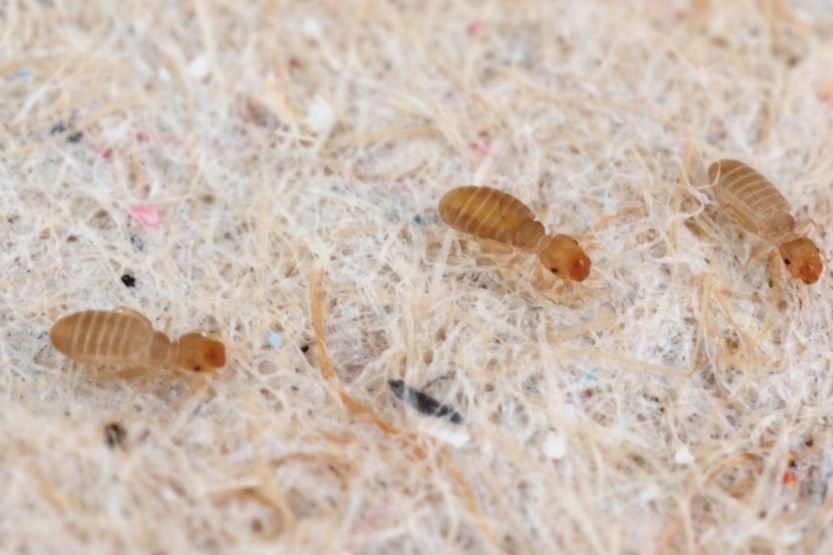
Let’s now talk about booklice according to the following categories:
- Habitat
- Female Booklice
- Infestation
- How to Get Rid of Them
Habitat
Despite their name, Booklice, also known as psocids, are not true lice. Feeding on mold and fungi, these tiny grey bugs on window sill thrive in environments with high humidity. These include around windows where condensation collects.
You can also find them in the following:
- Furniture,
- Under wallpaper,
- Around potted plants, and
- In books.
Psocids do not bite or transmit disease or damage food and fabric. But while they are relatively harmless, they can be very irritating in large numbers.
Female Booklice
The color of the adult booklice ranges from translucent white to grey to brown.
Female booklice can lay around 60 eggs throughout summer, and their entire life cycle can be completed in less than a month. In cooler temperatures, females lay fewer eggs, and the life cycle is completed over three months. The eggs are deposited singly and concealed with debris.
While undergoing their nymphal stage, booklice nymphs resemble adult psocids except that they are smaller and sexually immature.
Infestation
As booklice feed on mold, they will infest materials that support mold growth. These include cereals or the starchy paste in books and wallpaper.
The damage that they cause is usually insignificant. But their presence in stored grains and food products can render those unfit. To keep psocids from contaminating food, ensure they are not stored in humid places. Keep them dry, and throw away any infested food.
How to Get Rid of Them
It is usually not necessary to use pesticides in controlling booklice in homes. Instead, control the factors that may cause moisture and humidity in your home.
Lower the relative humidity in your home to less than 50% to deter mold growth on which booklice feeds on. An air space below potted plants on window sills will also help in reducing humidity. Also, wipe your window sill regularly with antifungal or dilute bleach to keep the tiny grey bugs on the window sill from coming back.
4. Springtail – Tiny Black Bugs on Window Sill
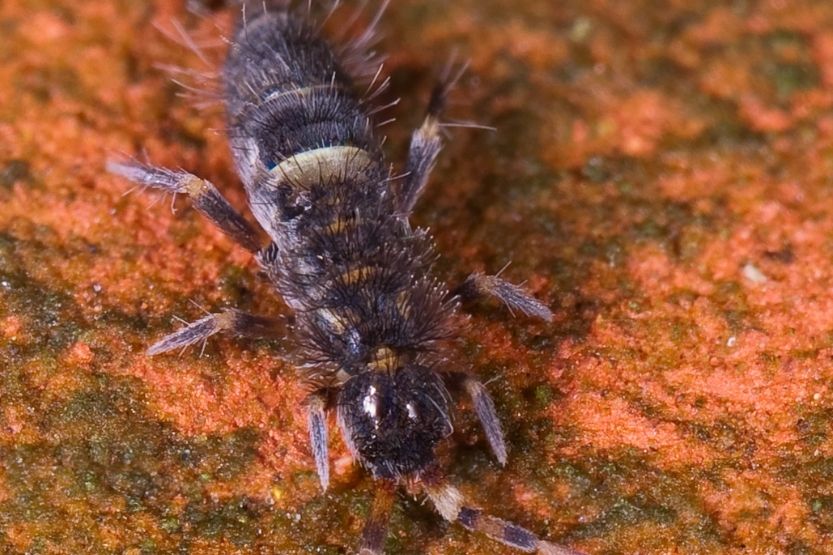
Lastly, let’s talk about the springtail according to the following categories:
- Size and Color
- Appearance
- Infestation
- How to Get Rid of Them
Size and Color
Collembola, also known as springtails, are very small and abundant insect-like organisms that thrive in moist conditions. They usually become a nuisance in homes during prolonged saturating rains or extended drought.
Ranging in size from 0.2 to 10 mm, those that tend to get into homes are mostly 1 to 2 mm long. These are the tiny black bugs on the window sill. But they also come in a range of other colors like:
- White,
- Grey,
- Red,
- Yellow,
- Orange,
- Purple, or
- Mottled (multicolored).
Some springtail species are elongated in shape, while others are more globular.
Appearance
The springtail is no longer considered an insect. It is distinguished by the different types of mouthparts concealed within its head, unlike the external mouthparts of insects. It uses its mouthparts for sucking fungi’s fluid and other liquid sources. Its other mouthparts are intended for some unspecified purpose.
Springtails also have antennae, a segmented body, and three pairs of legs. But their most distinctive characteristic is their furcula, a bi-forked appendage below the abdominal area. It can snap downward to propel them through the air.
A furcula can propel a springtail up to 100 times the length of its own body, which is its means of escaping from predators.
Infestation
Springtails can be found in mulch and under leaf litter. They can also be found in damp lawns and similar areas in and around the home, supporting mold growth.
Indoors, they are commonly sighted in bathrooms and basements. They are also sighted within the walls of newly-built homes soaked in the rain before being covered up.
There is a species of black springtail, Hypograstrura nivicola or snow fleas, which search for pollen spores on snow during warm winter days in wooded areas. Springtail populations have been estimated to grow as large as 100,000 per cubic feet, around 35 cubic feet.
They feed on the following:
- Molds,
- Fungi,
- Bacteria,
- Mildew, and
- Decaying plant material.
Sometimes, they damage crops in fields, gardens, and greenhouses.
How to Get Rid of Them
During periods of drought, springtails will move from their usual habitat to look for more humid surroundings. This leads them to inadvertently enter the home from under doors, through screens, and along window sills.
The best way to eliminate the tiny black bugs on a window sill is to lower the humidity in your home by using dehumidifiers or air conditioners. Remove all traces of mold and mildew in the house. Minimize the amount of mulch surrounding your home. Thoroughly water your houseplants and give the soil time to dry before you water them again.
Hire a professional pest control company to apply pesticides to the exterior and perimeter of your home.
What Are These Tiny Grey Bugs on Window Sill?
Conclusion – Tiny Bugs on Window Sill – What Are They?
Different types of tiny bugs could be crawling around your window sill. Four of the most common bugs on the window sill are springtails, booklice, biscuit beetles, and clover mites.
When you see these tiny bugs skittering across your window sill, try not to resort to insecticides or fumigation just yet. The common factor between most of them is that they thrive in humidity. So take steps to reduce humid conditions in your home to deter an infestation from occurring.
Keep your house clean and orderly to prevent mold growth and the fungi that these bugs feed on. If it becomes necessary to apply pesticides or fumigate your home, call in a pest control professional to help you do it properly and safely. Make sure to keep insecticides out of the reach of children and pets.
Read next:
What Is Eating Holes in Your Lettuce?

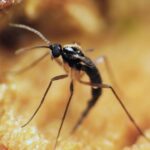

![Tiny Bugs in Bed [Not Bed Bugs] - What Are They? Tiny Bugs in Bed](https://homecarezen.com/wp-content/uploads/2022/01/tiny-bugs-in-bed-150x150.jpg)
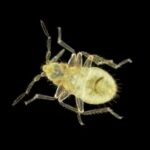
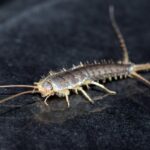

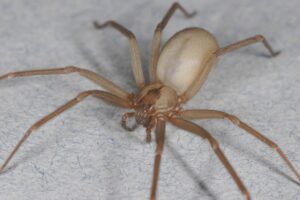
![Read more about the article White Salt-Like Grains in Bed [What Are They?]](https://homecarezen.com/wp-content/uploads/2021/12/white-salt-like-grains-in-bed-300x200.jpg)
